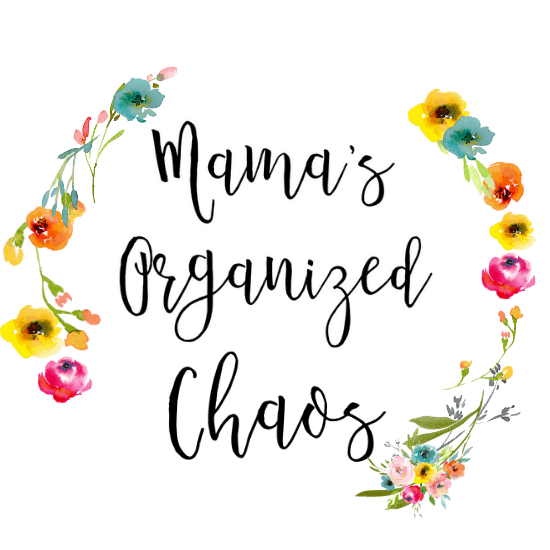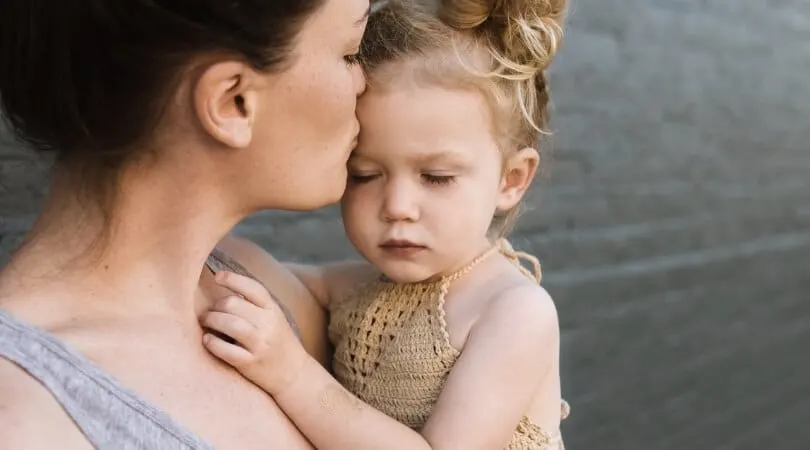This post originally appeared at Christine Keys blog in September of 2018.
Our daughter is insanely well behaved. She is very mature. She is also very passionate, and very strong-willed.
And she’s three and a half.
Put that all together and we get the occasional screaming fit.
These screaming fits are what I can only describe as passion rages of hers. She seems to need to get emotion out in some way.
When they happen, they happen in streaks. We’ll have several days in a row of these fits.
Nothing I do can stop them. If our daughter wants to have a 2 hour long screaming fit, that’s what it will be.
Sometimes it’s 10 minutes, and sometimes it’s literally 2 hours.
I’m sure you are wondering why I am writing this post then!
What advice could I possibly have to offer? LOL
This post is 3 fold.
- Know that you are not alone.
Your child is not the only one doing this. Fits are a normal progression of toddlerhood that we all have to manage. - The reality is that these fits happen to all children.
With strong-willed children, there is not much you can do in the moment.
There are things you can do to set your child up for long term success, however (see below). - And, there are tactics that YOU can use as a parent to help yourself get through them.
You Are Not Alone
I know in the moment it sure feels like you are.
I know that these fits are brutal. I want to scream. I want to pull my hair out. I hate these fits!
When I take a step back and remember that this is normal behavior, I feel comforted. It’s not me. I’m not parenting incorrectly.
While these fits are certainly not ok, they are normal.
We just have to look at them as the teaching opportunities that they are.
Don’t second guess yourself, your parenting, or your ability to handle them. You can do this.
Your child will not always have these fits.
Setting Your Child Up for Long Term Success
1. Get Your Child the Right Amount of Rest and Food
A well rested child is happy and ready to learn.
Fits often happen out of hunger or tiredness. Eliminate these two factors and you’ll be setting your child up for success.
There will still be fits, but there will be far less than there would be otherwise, and they will be easier problems to “solve”.
If you’ve dropped your child’s nap before they are truly ready, this can be a huge factor for outbursts.
Click here to read–> How to know if your child is ready to drop naps.
2. Provide tools to help your child calm down on their own
We have to teach our children how to calm down.
I HIGHLY suggest making Daniel Tiger a part of your TV show rotation.
I find that Caroline identifies with the characters a lot, and she has learned so much from this show with regards to managing her emotions and dealing with behaviors.
We build upon the shows, obviously. We practice calm down techniques during happy moments. We talk, we practice, we teach and learn.
There are all sorts of tactics you can teach your children:
- Take a deep breath
- Count to 3
- Squeeze your hands together
- Hug a blanket or stuffed animal
- Talk about what’s upsetting
You can even give them tangible items to help them calm down:
- Calm down tool kit:
We give our daughter a calm down tool kit. This kit includes a bin of items that she can use to help herself calm down, and cards she can use to remember each tactic.- Bin (blanket, stuffed animal, book, items to draw with, a squeeze ball, etc.)
- Cards (emotion cards, and calm down cards) There are 4 emotion cards, and 9 calm down technique cards.
- She can use these cards all on her own.
- She first grabs an emotion and explains how she’s feeling. It opens up a great conversation.
- She then picks a technique card and does what’s on the card.
- This calm down tool kit has worked wonders for her.
- She grabs it when she’s ready and open to the idea of calming down.
- You can get the printable set of emotion cards and technique cards at my Etsy Shop by clicking this link–> Mama’s Organized Chaos Printable Etsy Shop
- Calm down tool kit:
3. Empathize with their feelings

There are times I look at my child and think “Really?? You are crying over this!?”
The reality, however, is that in their small world, “this” is huge. Allow yourself to truly empathize with their feelings.
You do not have to understand why they are so upset.
You do need to empathize with the fact that they are upset, however.
You do need to tell them that you understand how they are feeling, even if you don’t understand why.
Separating the why away from the feelings is key to truly having empathy.
4. Help Your Child to identify their feelings
Focus on solving the problem. Solving the problem happens in two ways.
First, figuring out how your child is feeling. Second, figuring out why they are feeling that way.
If you can talk through these things with your child, you are more likely to be able to actually help them.
I tell my daughter that I can only help her solve the problem if she talks to me.
We talk about her feelings using the calm down tool kit mentioned above. We then figure out a way to solve the problem together.
Identifying emotions with a toddler can be difficult. Talking about emotions at all times helps tremendously.
Talk about your emotions when you get frustrated. Talk about it when you are sad.
Talk about it when you feel happy and calm. Don’t leave any emotions out. Talk, talk, talk.
5. It’s ok to cry and have emotions, but it’s not ok to throw a fit
I think this one is key to having healthy emotions and behaviors.
It is totally fine to cry.
It is totally fine to feel angry and sad.
We explain this to our daughter. It is ok to feel the way that you feel.
We also explain what is not ok (throwing a fit, hitting, biting, screaming, ignoring us, repeating herself, etc.)
6. Offer hugs
Before I try much else, I like to offer a hug. Sometimes this stops the fit immediately.
Often, she calms down and then starts screaming again right after.
But, I like to at least try this technique in the case that it helps.
If nothing else, your child knows that you are there for them.
Now, at the age of three…I have some rules about hugs…
“I will stop hugging you if you continue to scream. Crying is fine. Screaming in my ear is not.”
If it continues I set her down.
If she has asked nicely for a hug, I give it- but only so many times.
If I have given her 4 hugs, and it just results in her screaming the minute we stop hugging, something has to change.
At that point I make her participate and DO something.
She has to do one of her calm down techniques on her own, before I will partake again.
This helps put the ownership on her as well. It is not my job to calm her down. It is her job to calm herself down.
I will help, but I won’t and can’t do it all.
7. Enforce consequences
I found it hard to find consequences for fits at first. Sometimes it is obvious.
If I said no to an activity, and the fit happened, then the activity doesn’t get to happen at all that day.
If I had asked her to put toys away so we could leave and a fit ensued, the toy gets taken away the remainder of the day.
But what if the fit is for some abstract reason?
This morning, for example… our daughter through a fit because I’d asked her to go potty on her own (something she knows full well how to do).
In this case, attention (or lack there of) is the consequence.
- Lock the door and leave- My daughter likes to follow me around and scream. She likes to mean touch and won’t let up. It makes me SO angry. I need to remove myself from the situation.
- In our old house, I’d put her in her room (a safe space), and lock the door. That way I could leave and she was safe. I told her when she was calm, I’d return.
- In our current living situation, that is not possible. So, I go to my room and lock my door. She bangs and screams on the outside. I inform her that I’ll come out when she’s calm.
- My message to her is the same: I don’t want to be around you while you are being mean to me. When you are calm, I’d love to return.
- It’s a very real consequence and sends a very clear message. She eventually calms herself down and asks nicely for me to come back. I do. If she starts screaming again at any point, we repeat the process.
- Have independent time- Often after the fit is over, I am spent. I do not have the energy to play, nor am I in the mood.
- We have independent time as a result. I do what I want, and she does playtime in her room.
- I explain to her that I am still upset and that I need time to myself. I make sure she knows it is a direct result of how she treated me.
- Remove privileges- If it makes sense, take away the source of the fit. If it was a toy, TV, an activity, it gets removed for the remainder of the day.
Tactics To Get YOURSELF Through These Screaming Fits
- Take a moment
I started leaving the room for me. It happens to also help my daughter (I think).
If my daughter screams at me enough, or ignores me enough, I scream back. I hate it when this happens.
So I try to engage at first and help her, but then I leave. I do not engage with my child until she is calm enough to hear me. - Take another moment
I keep trying to help. I want to help. But if it doesn’t work, I leave…again. No one feels good if Mama loses her cool.
It doesn’t help anything or anyone. So I take the time that I need as well. I make sure she’s safe, and then I leave. I breathe. I do what I can to remain calm. - Remember this is a normal part of development
Don’t forget this is normal. You didn’t fail as a parent. Your child just needs to work through their emotions. They need to learn.
Your job is to teach. Keep it in perspective and do not take it personal. Easier said than done. Write it down if you have to! - Stay consistent
The best thing you can do for yourself and your child is to stay consistent. This way you both know what to expect.

